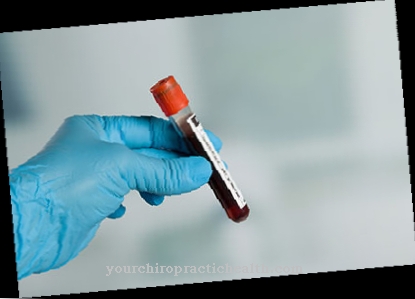Under a Osteoma a benign bone tumor is understood. It often shows up in the cranial region and in the paranasal sinuses.
What is an osteoma?

© Alexander Potapov - stock.adobe.com
The Osteoma belongs to the group of benign bone tumors. Bone tumors are growths that arise in bone tissue. There are both benign and malignant bone tumors. In contrast to bone cancer, however, an osteoma does not degenerate the affected tissue.
In addition, it does not lose its original function. In addition to osteomas, osteochondromas are also benign bone tumors. A typical feature of the osteoma is its pedicled appearance. In addition, the benign bone tumor has a spongy and pedicled appearance.
In medicine, a distinction is made between three different types of osteoma. There is the solid osteoma (osteom durum), the spongy osteoma (osteom spongiosum) and the brain-prominent osteoma (osteom medullosum). It has a larger cavity that holds bone marrow.
causes
In principle, osteomas can form anywhere on the skeleton. In most cases, however, they occur on the skull. The frontal sinus region is particularly affected. Occasionally they also occur on the ethmoid bone (ethmoid bone) or the maxillary sinus (maxillary sinus).
The causes for the development of an osteoma are different. In many patients, however, an exact cause cannot be determined. The osteomas arise from mature bones and are either compact or spongy. The compact osteoma is made up entirely of bone.
It is not infrequently a side effect of benign tumors on the meningiomas (soft meninges). The composition of a spongy osteoma consists of bones and cavities. Sometimes they occur in the context of hereditary diseases such as Gardner syndrome. Gardner syndrome is characterized by skull osteomas, skin tumors and intestinal polyps.
In addition, bone fibromas form near the osteomas. These have their origin in the connective tissue. In addition, there are bone hemangiomas that arise from the vessels. Biochemical, physical or chemical processes are discussed as possible triggers of osteomas. So far, however, no evidence has been found. A possible connection is seen with rapid bone growth. Benign bone tumors mainly develop between 20 and 30 years of age.
Symptoms, ailments & signs
An osteoma can cause a variety of symptoms. Most patients experience headaches, the intensity of which increases over time. In the paranasal sinuses, the affected walls sometimes bulge. Furthermore, the osteoma threatens to obstruct the duct of the paranasal sinuses.
This, in turn, favors the formation of a sinus mucocele. It is not uncommon for the mucocele to cause a feeling of pressure inside the head. Restrictions in vision and the ability to see double images are also possible. An osteoma can also displace the eyeball. If the benign bone tumor continues to expand, this leads to tissue shrinkage in the dura mater (hard meninges). This creates the risk of endocranial complications.
Other conceivable complaints are the accumulation of fluid in an osteoma near the joint, the inhibition of bone growth, deformations of bones and joints, pressure damage to nerves or vessels, bone fractures and pain in the affected part of the body. The symptoms also depend on the type of tumor and its body position.
Diagnosis & course of disease
The symptoms also play an important role in a medical examination. It thus provides the first indications of the disease, which applies in particular to bone deformities. As part of the examination, the attending physician carries out various pain and function tests. These include a stress test or a blood flow check.
An osteoma can be reliably diagnosed through the typical changes that can be seen on an X-ray. If there is still any doubt as to whether the tumor is benign or malignant, further examinations must take place. This includes computed tomography (CT) and magnetic resonance imaging (MRI). It is also possible to take a tissue sample (biopsy), which is then examined under a microscope.
The exact position of the bone tumor also provides important information. Osteomas often show up in certain parts of the body. A differential diagnosis to other diseases with similar symptoms is also important. This primarily includes ostitis fibrosa, in which the forehead and the upper jaw bone are rubbed painlessly. Since osteomas are benign bone tumors, their course is usually positive. Sometimes an osteoma can recur.
Complications
Those affected suffer from the osteoma primarily from very severe headaches. As a rule, these headaches occur for no particular reason and, above all, very sporadically. Furthermore, there is also a very uncomfortable feeling of pressure in the head and also in the nose. This often leads to a significantly reduced ability of the patient to concentrate, so that the development of the child may also be restricted.
The osteoma also often restricts and significantly reduces the field of vision. The osteoma also leads to reduced bone growth, so that it does not completely heal, especially after accidents or fractures. Furthermore, the symptoms and the further course of this disease depend very much on the exact position and the extent of the tumor, so that a general prediction about the complications cannot usually be made.
The osteoma is treated with a surgical procedure. There are usually no complications. The affected person may then be dependent on implants. Successful treatment does not affect the life expectancy of the patient.
When should you go to the doctor?
Indefinable pain, deformation of joints and bones and pressure damage to the joints must be clarified by a doctor. These symptoms indicate an osteoma that needs to be diagnosed and treated by a doctor.Affected people are best to speak to their family doctor, who can make a suspected diagnosis based on the medical history and a physical examination.
If there is actually an underlying osteoma, an orthopedic surgeon is involved in the treatment. If movement damage has already occurred, a physiotherapist or a sports doctor is also involved in the therapy. People who have had cancer in the past should see a doctor immediately with these symptoms.
The same applies to genetic predispositions, which increase the likelihood of benign bone tumors developing. If a parent has had an osteoma or osteochondroma in the past, this can be passed on to the children. Therefore, corresponding risk patients should see a doctor immediately if the symptoms mentioned occur. If the osteoma is treated early, the condition can usually be overcome without long-term consequences. If it is treated late or inadequately, it can lead to restricted mobility and severe pain. In the long term, the tumor can spread and even lead to death.
Treatment & Therapy
Treatment for an osteoma depends on whether it is causing discomfort or not. Any complications and the age of the patient are also important. If the tumor is only growing slowly and there are no symptoms, the patient will usually wait and observe the further course.
If necessary, surgery is performed on the osteoma. The surgeon ensures that the procedure is as gentle as possible. In the course of the surgical procedure, the surgeon uproots and removes the osteoma from the body, which is also known as extirpation. If necessary, a replacement with the body's own tissue or artificial implants can be introduced.
You can find your medication here
➔ Medicines for joint painOutlook & forecast
The prognosis for an osteoma is usually very favorable. In most cases one can wait to see how the bone tumor develops. Surgical removal is usually not necessary in these cases. The osteoma grows very slowly and does not usually cause any symptoms.
In a small fraction of cases it degenerates into a malignant bone tumor. After a timely surgical removal, however, the prognosis is relatively good even with such a device. An osteoma, on the other hand, can become problematic if it is in the area of the eyes, nose or paranasal sinuses. Certain complaints or impairments can occur in these areas. However, these are usually not life threatening. In most cases, however, an operation that produces reliable results is advisable. Such an intervention is rarely not possible. Nevertheless, the outlook for the affected patients is relatively good.
After the osteoma has been removed, benign bone tumors recur in very few cases within the first few years after the procedure. A later recurrence, however, is relatively unlikely.
prevention
There are no known preventive measures that serve to prevent an osteoma. If there are recognizable deformations or symptoms, it is therefore important to see a doctor as soon as possible and to find out the causes. In this way, further impairments such as bone fractures can be prevented.
Aftercare
Follow-up care is an inevitable part of any cancer therapy. A successfully treated tumor can recur in the same place after some time. This results in renewed complaints and the risk of a shortened life expectancy. A follow-up should therefore be carried out closely.
Doctors promise the best therapeutic success by starting treatment at an early stage. Although an osteoma is a benign tumor that is not prone to metastasis, follow-up care is necessary because it can cause symptoms. Doctors initially refrain from an operation as long as there are no everyday restrictions.
During this time, there are regular routine checks. Scheduled follow-up examinations are also indicated after a surgical procedure because of the possible development of a relapse. The doctor and patient jointly determine the location and scope of aftercare. A six-monthly check is usually sufficient.
Imaging methods such as X-rays or a CT are particularly suitable for determining the progression of the disease. Due to the technical requirements, aftercare usually takes place in clinics. Histological examinations can also lead to a diagnosis. If there is an operation, rehabilitation is often part of the follow-up care. The patient is specifically prepared by therapists for his professional and social reintegration.
You can do that yourself
Osteoma patients can do a lot to support medical therapy and improve their own wellbeing. Light and regular exercise strengthens the immune system, the cardiovascular system and the hormonal balance. Depending on where the tumor is located, swimming and running, but also cycling, walking or even moderate muscle training are possible. Alternative measures such as yoga, tai chi and qi gong have also proven to be helpful in treating osteomas. A balance between sport and rest is important.
If the doctor prescribes bed rest, this should be followed. The diet should consist of foods with a lot of vital substances and minerals. Vegetables, fruits, nuts and seeds help to get fit again quickly after chemotherapy or radiation therapy. These general measures can be supported by exchanging ideas with like-minded people.
In a self-help group or in Internet forums, osteoma patients can talk to other sufferers about their symptoms and problems. It is just as important to maintain social contacts. Hobbies and passions provide a counterbalance to the serious aspects of the disease and help to maintain a high quality of life despite the illness. During and after the treatment, it is important to relieve the stress through relaxation exercises such as autogenic training or progressive muscle relaxation. This reduces physical ailments and mental fears in equal measure.




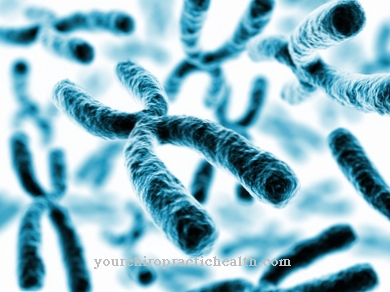

.jpg)






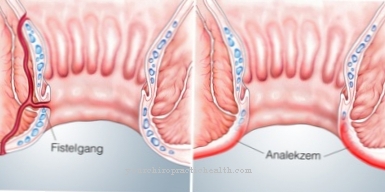

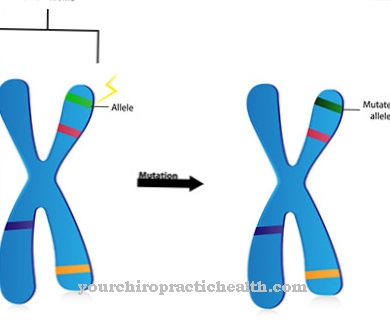
.jpg)






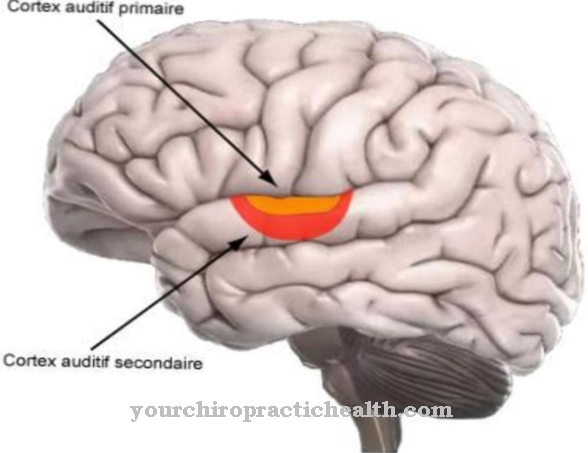
.jpg)


